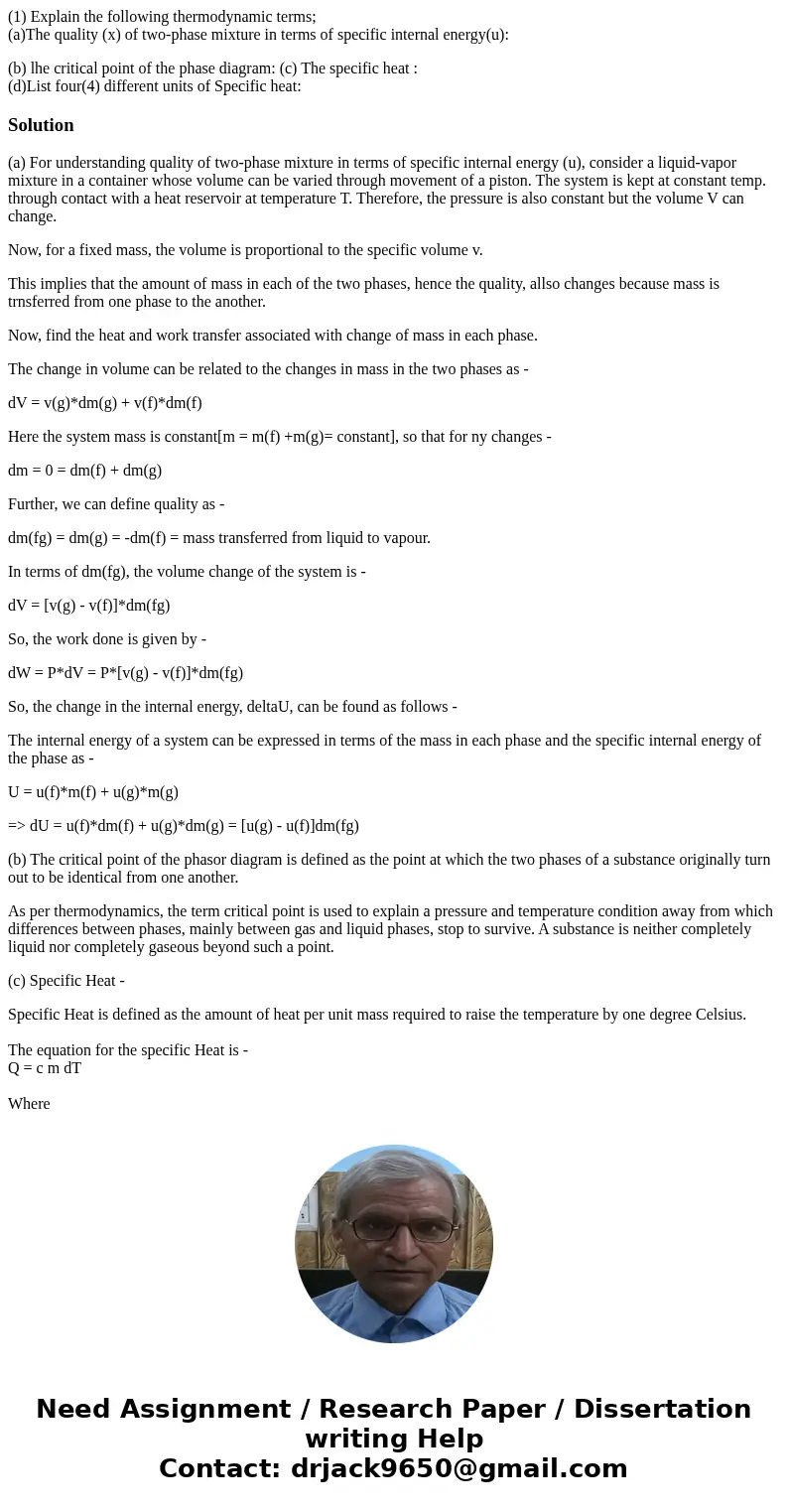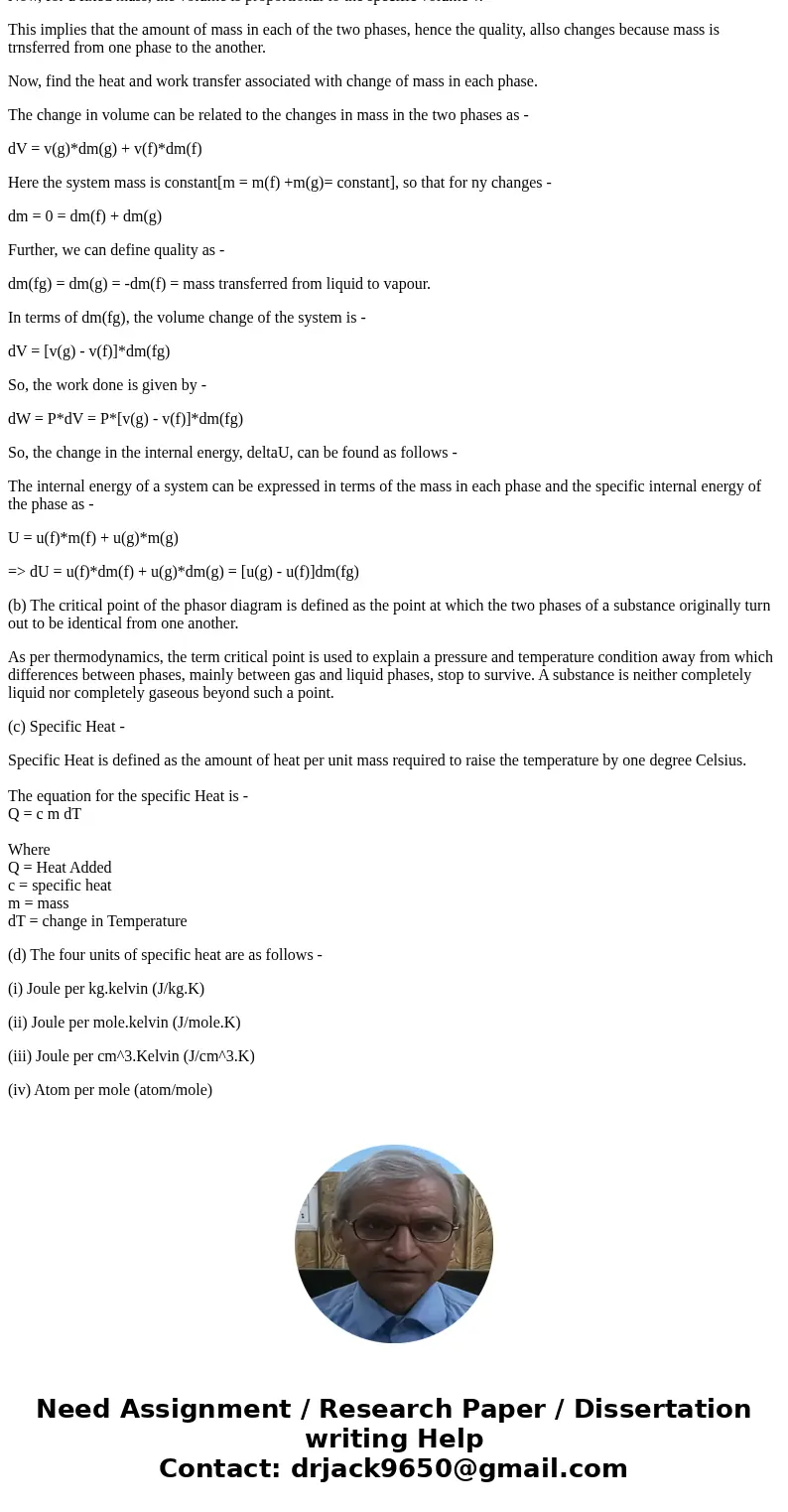1 Explain the following thermodynamic terms aThe quality x o
(1) Explain the following thermodynamic terms;
(a)The quality (x) of two-phase mixture in terms of specific internal energy(u):
(b) lhe critical point of the phase diagram: (c) The specific heat :
(d)List four(4) different units of Specific heat:
Solution
(a) For understanding quality of two-phase mixture in terms of specific internal energy (u), consider a liquid-vapor mixture in a container whose volume can be varied through movement of a piston. The system is kept at constant temp. through contact with a heat reservoir at temperature T. Therefore, the pressure is also constant but the volume V can change.
Now, for a fixed mass, the volume is proportional to the specific volume v.
This implies that the amount of mass in each of the two phases, hence the quality, allso changes because mass is trnsferred from one phase to the another.
Now, find the heat and work transfer associated with change of mass in each phase.
The change in volume can be related to the changes in mass in the two phases as -
dV = v(g)*dm(g) + v(f)*dm(f)
Here the system mass is constant[m = m(f) +m(g)= constant], so that for ny changes -
dm = 0 = dm(f) + dm(g)
Further, we can define quality as -
dm(fg) = dm(g) = -dm(f) = mass transferred from liquid to vapour.
In terms of dm(fg), the volume change of the system is -
dV = [v(g) - v(f)]*dm(fg)
So, the work done is given by -
dW = P*dV = P*[v(g) - v(f)]*dm(fg)
So, the change in the internal energy, deltaU, can be found as follows -
The internal energy of a system can be expressed in terms of the mass in each phase and the specific internal energy of the phase as -
U = u(f)*m(f) + u(g)*m(g)
=> dU = u(f)*dm(f) + u(g)*dm(g) = [u(g) - u(f)]dm(fg)
(b) The critical point of the phasor diagram is defined as the point at which the two phases of a substance originally turn out to be identical from one another.
As per thermodynamics, the term critical point is used to explain a pressure and temperature condition away from which differences between phases, mainly between gas and liquid phases, stop to survive. A substance is neither completely liquid nor completely gaseous beyond such a point.
(c) Specific Heat -
Specific Heat is defined as the amount of heat per unit mass required to raise the temperature by one degree Celsius.
The equation for the specific Heat is -
Q = c m dT
Where
Q = Heat Added
c = specific heat
m = mass
dT = change in Temperature
(d) The four units of specific heat are as follows -
(i) Joule per kg.kelvin (J/kg.K)
(ii) Joule per mole.kelvin (J/mole.K)
(iii) Joule per cm^3.Kelvin (J/cm^3.K)
(iv) Atom per mole (atom/mole)


 Homework Sourse
Homework Sourse